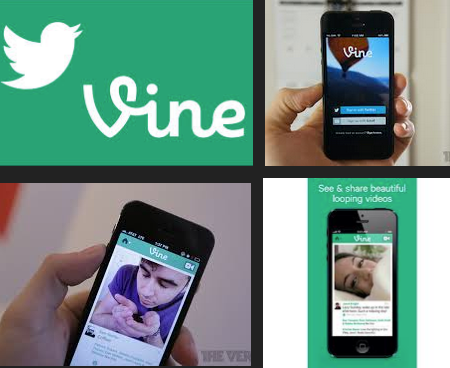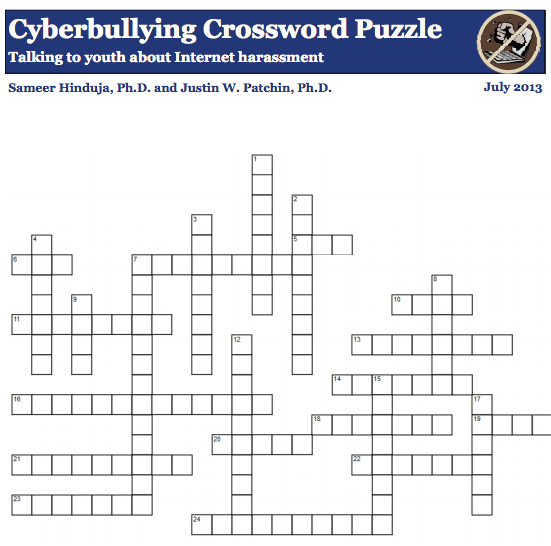Cyberbullying is a growing problem among children, but the effects can last much longer than the event itself. Once something goes online, it can be almost impossible to take it down...and humiliation can follow a child for the rest of their life. However, some teachers are turning to a new method of watching and controlling things: "Friending" or following their students.
The keystone of this strategy is the fact that social media sites, by design, are intended to share information with a particular group of people. This can be as small as a Tweet group of friends or as long as an essay re-published to thousands of people with one click of a button. However, as easy as it is to follow students, following the bullies with the intention of stopping their behavior is not the best strategy for preventing cyberbullying, even if teachers are the ones doing it.
Steven Woda

Recent Posts
Everything You Need to Know About Ask.fm
Social media is a phenomenon that has swept over the youth of the world. With different ways to connect to each other, the appeal is large for these types of sites. The newest that has been on the upward trend is Ask.fm, and it has been for both positive and very negative reasons. Here are some things you need to know about the site overall and some tips on how to prevent bullying and cyberbullying through Ask.fm.
The Site
Ask.fm was founded in 2010 in the country of Latvia. It was created as a rival to Formspring and has a similar layout. Users create a profile in which they open themselves up for questions. Some of these questions can be fun and casual, such as “What is your favorite sports team?”
Cyber-bullying, Sexting Can Affect Males and Females Differently
Read this piece from The Hays Daily News that brings up a great point that cyberbullying and sexting can affect males and females differently.
This is the seventh in a series about abuse and violence in adolescent dating and romantic relationships.
Q: What is the relationship between teen dating violence and abuse and technology?
The following article is based on a 2009 digital abuse study co-sponsored by MTV and the Associated Press. A total of 1,247 respondents ages 14 to 24 participated in an online survey. Digital abuse includes dating abuse and cyber-bullying. The latter term is defined as the use of electronic communication for the purpose of harming another person. Cyber-bullying includes digital communications to manipulate, intimidate, falsely discredit or humiliate other persons. Cyber-stalking is the form of cyber-bullying that involves repeated patterns of cyber-bullying or cyber-harassment. Sexting is a more specific type of digital abuse in which one person sends explicit sexual pictures or messages from one cell or mobile phone to another. All these digital abuses can be found in online dating violence and abuse.
Of the people interviewed (ages 14 to 24), 50 percent reported experiencing digital abuse. Among the teens, girls were more likely to have been targeted than boys at the rate of 53 percent to 42 percent, respectively. The respondents in the survey stated the most common types of digital abuse they experienced were spreading lies (online and in text messages), violation of trust and digital disrespect, mean messages online and in texts.
This Is What 'The Today Show' Thinks Teen Sexting Looks Like
The Today Show did a segment on sexting last week, and they couldn't have been more wrong.
Read the full story below from our friends at Business Insider.
Last Thursday, "The Today Show" featured a segment on the new and shocking discovery that teens use their phones to sext each other, even though they use their phones to do literally everything else. We first saw the segment on Slate.
"Today Show" host Matt Lauer tries to figure it all out: "So a teenage boy will be sitting in a classroom, there will be a teenage girl he's never even talked to, and he will pick up the phone and text her 'I wanna hook up or I wanna do this to you, are you willing?'" he asks in the segment.
Ask.fm Responds to Cyberbullying Controversy
Ask.fm has been a hot topic among many outlets the past few weeks because of its terrible tendency to enable cyberbullies. Apparently, the company has listened to protesters and victims calling for action. The online social networking site has responded to the cyberbullying controversy by implementing new safety measures.
Ask.fm: Little-Known Social Site is Host to Kidnap Victim
The following piece from NBC's Helen A.S.Popkin is a great article on Ask.fm and the recent media storm around it.
Popular with kids, and — until recently — obscure to many adults, Ask.fm is a Latvia-based social networking site where members interact by inviting others to ask anonymous questions.
Though the site has more than 65 million members who interact in more than 30 languages, it wasn’t until Monday that Ask.fm made headlines in the United States. That’s when kidnapping victim Hannah Anderson, barely 48 hours after her rescue, logged on using the name “Hannahbanana722." Her identity later confirmed by her grandparents, Anderson openly answered personal questions about her ordeal, posted by anonymous strangers. She also posted several smiling selfies — cellphone self-portraits — as well.
6 Seconds of Life-Altering Video: What You Need to Know About Vine
Though innovative media platforms bring new ways for kids to express themselves and share their lives with their friends, they also bring exposure, attract bad influences, and introduce brand new ways to have unwise youthful decisions preserved on the Internet. Parents should keep a particular eye out for their tween or teen's participation on Vine, a video service purchased by Twitter in 2012.
For the uninitiated, Vine is an app allows users to create and share six-second, silent looping video clips on Vine or to Twitter or Facebook. According to Wired magazine, it's one of the top apps in the iOS download ratings, even after the introduction of video for Instagram. It's popular because of its informal, unfiltered, uncensored culture, and is uniquely positioned in the marketplace because of its popularity among young people. As tech journalist Mat Honan writes:
Cyberbullying Laws Implemented at State Level: Will it Matter?
Cyberbullying has now been deemed a cultural problem by some media outlets, and it might have to be blamed on the contentious media culture that people see. Since federal laws on cyberbullying are still non-existent, one has to wonder how existing state laws on cyberbullying are working. As of now, 34 states have cyberbullying laws, even though we still hear so much about kids being harrassed online in every state.
But what new states are joining the fray? And will state laws make any real difference without federal action?
Oklahoma the Latest to Pass a New Law
Recently, the anti-bullying law Bill 1661 was signed into law in Oklahoma by the state's governor, Gov. Mary Fallin. While it addresses the problem of bullying in general, it specifically hones in on cyberbullying so schools can use law enforcement to intervene. The bill allows schools to keep internal records of
Teens Flock to Tinder - The Social Hookup App
There are so many ways for teens to communicate today - email, texting, facebook and now Tinder. Tinder is a new dating app that creates a collection of Facebook photos that it shows to other interested parties in the area. One of the best parts of Tinder is the local feature which means all the people who are interested in you are in your area.
Teens love Tinder for a number of reasons. First, is the instant gratification that it gives. How the apps works: a picture of someone pops up and the user has the option of clicking on a green button and if they don't like what they see they hit an X. The average teen is thrilled to find out who thinks they are hot. Tinder only gives the good news. If people see the pictures and hit the X the teen never knows about it.
Digital Parenting: What Every Parent Needs to Know About Snapchat
Keeping up to date with the evolution of social media can be a challenge for any parent, but familiarizing yourself with the latest trends is a vital part of digital parenting. Facebook, Twitter, and Instagram are the most popular social media outlets, but there are many less known apps that are gaining a large teen following. One app that is taking over social media is Snapchat. Snapchat, which is used largely by teens and young adults, allows its users to send pictures to their friends that self-destruct after they are viewed. Unfortunately, the promise of a picture disappearing is not entirely true. The person receiving the photo can choose to take a screenshot of it. Even though the sender is notified the screenshot was taken, once the recipient has acquired the photograph how they choose to use the image is out of the original senders hands.
With the allure of a picture vanishing once it is viewed, Snapchat has become an app that is widely used for taking photos of a sexual natures. While parents are aware of sexting by text message, they may not realize their teens have found a new way to send inappropriate images of themselves. Snapchat's advertising as a self-destructing photo app has created a false sense of security in teens and young adults. The reality that the receiver of the image can take a screenshot of the photo and use it any way they want without the senders consent is a consequence a teen may not fully comprehend.
The Connection Between Sexting and Suicide
Here is a very interesting and shocking article in Psychology Today by Elizabeth Meyer, Ph.D about sexting and suicide. Even though it is from 2009, most of the article still rings true, and unfortunately not much has been done to help victims of sexting cases that got out of hand and the bullying/cyberbullying that almost always follows.
Trust and Digital Parenting
Parental involvement has been shown to have positive influences on a child’s academic and social development. As kids get older, they naturally want to gain independence and trust. When parents are controlling, kids may question if their parents trust them and parents might feel like they’re intruding. On the other hand, the job of a parent is to safe-guard in a reasonable and responsible way, leading both by example and by setting firm guidelines.
Set boundaries
Digital Parenting: Get Tangled Up in Vine
Digital parenting is an increasingly important part of raising kids today, and rightfully so. Most parents want their kids to be able to stay in touch with their friends and family and share what inspires them through different mediums.
Doesn't it seem like just about everyone has at least one social media account today? They are so pervasive, and slip themselves into every corner of life, that just this morning I found myself going to Twitter to find out the news on the latest updates in the Boston Marathon bombing. And I was amazed at all the information I had from multiple sources in one location.
Speaking of Twitter, you might not have heard about its latest social network project that has been increasingly gaining popularity among teens, tweens, videographers, people who want to be in the know about the latest social network, and Vine is the newest sharing tool. Being able to share favorite videos and photos is always fun, but parents need to know exactly what it involves.
Read More »Cyberbullying: Why Spillit Needs To Be On Your Radar
The internet and mobile devices are continually evolving. New applications and websites are developed each day and shared with the world. While many fade into obscurity or into their niche worlds, others truly take off and become more than just another app. While many of these trendier applications are meant for good, their impact and effects can be very detrimental and harmful. One of the newest applications available is known as Spillit, an application that has become as much about cyber-bullying as it has social connection. The following explains more about this new application and why parents, adults, and children should all be aware of its potential dangers.
What Is It?
Spillit is an application that has users create a login name and password to participate on the site. The ultimate goal of the page is to ask other users what they think about that individual. With a limited number of characters, other frequenters to a user’s page can answer the question. This is meant to help learn about each other and create a social connection via the page.
Your Kids and Their “Internet Posse”
Parents may not get it. Actually, I didn’t get “it” until I was forced to evaluate child-directed websites as a part of the Children’s Online Privacy Protection Act (COPPA) compliance, as newly required by the Federal Trade Commission (FTC).
Starting July 1, 2013, the FTC requires that sites and applications directed primarily to children, effectively allow parents to review where their child’s information is shared, and delete that internet footprint, or record of sharing. This sharing of child information through ad networks, cookies, clear gifs, beacons, etc. is what one can consider your child’s “Internet Posse”. They are a Posse as they are not there just for the initial sharing of internet activity, but in behavioral advertising networks; they can follow your child’s internet activities outside of the child website that they visited.
10 Common Internet Scams Your Child Might Fall For
The world wide web can be a big, scary place for your kids.The most efficient way to monitor your child's online activity is through a parental intelligence system that will monitor and analyze their actions. Scams come a dime a dozen, but it's worse when they specifically target your children. You need to know what to watch out for. Here are the 10 most common Internet scams your child might fall for:
1. Knockoffs
Kids love clothes, especially teenagers. They want to be trendy and have all the latest designer styles when they know they can't afford it. So scammers create ads for all these "discount" online stores
FBI Calls Cyberbullying a 'Significant Issue' For Law Enforcement
This article was originally published on Digital Journal by Marvin Dumon. It can be accessed here.
Cyberbullying can be more pervasive than traditional forms of bullying. Bullying at school as well as pranks can be more easily detected by teachers, administrators and fellow students.
A recent bulletin on cyberbullying and sexting published by the Federal Bureau of Investigation (FBI) advises law enforcement agencies across the U.S. that “the growth of cell phones and Internet usage among teens has altered youth social and conduct norms.”
The FBI cyberbullying report adds that “cyberbullying is one of the most significant new issues law enforcement has to address. Anecdotal and research-based accounts from police across the nation depicted a lack of clear guidance, training, and support. This is unfortunate because bullying is an age-old problem with recent forms often relying on technological devices and mediums.”
Fun and Interesting Ways To Teach Your Child About Internet Safety
The internet has afforded children, some as young as preschool-aged, new and exciting ways to learn and to discover. It has also shown itself to be a platform through which online predators can slink undetected. The internet can be as dangerous as it is useful. For this reason, many parents enforce strict guidelines in terms of search time, websites and appropriate chat rooms.
This may not be the best approach. Restriction ultimately leads to rebellion. The objective here is to make internet safety training as interactive as possible, so that your child understands the risks associated with irresponsible behavior, has fun while learning, and makes the decision to reinforce those caveats in themselves while surfing with limited supervision.
Here are some fun ways to teach your children internet safety.
Games
uKnowKids June 2013 Newsletter

June was Internet Safety Month
uKnowKids created and released a lot of unique content to help keep kids safe online and on their mobile phone during the month of June and into the summer. Download our latest eBook “Internet Safety and Strategies for the Lazy Days of Summer” now and then check out our infographic that features exclusive safety tips from leaders in the industry.
Cyberbullying Crossword Puzzle for Kids
By Sameer Hinduja and Justin W. Patchin
A crossword puzzle to be distributed to youth to promote discussion about cyberbullying.
A look at the clues, download the PDF here:
ACROSS
5. Acronym for the company that provides an Internet connection to individuals or companies.
6. Short for “World Wide Web” or pages linked together via the Internet
7. A wireless handheld device which allows for telephone communications.
10. Interactive web journal or diary, the contents of which are posted online and then viewable by some or all individuals.
11. An electronic device that stores and processes information and also facilitates electronic communication when connected to a network.










.jpg)








